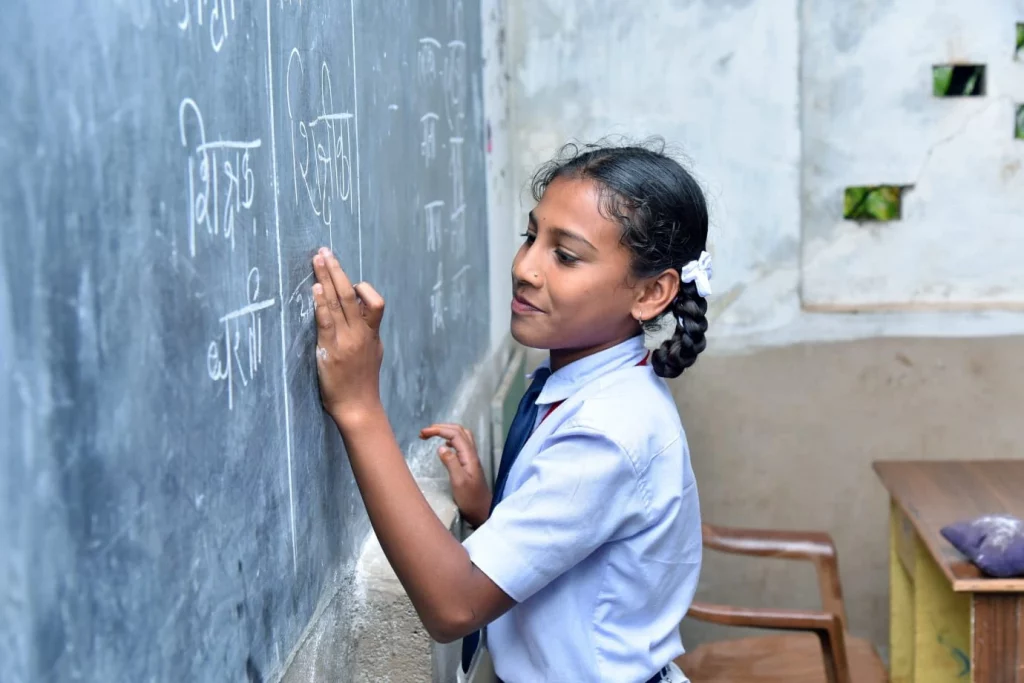In India, learning and education are highly valued. However, across the country, educational institutions are understaffed, don’t have sufficient infrastructure, there is a shortage of teachers and existing personnel don’t have opportunities to upskill themselves. Is there a shortage of resources? Is India investing enough in education?
India’s Investment in Education meets International Benchmarks
In terms of GDP percentage and government expenditure, India has been investing more than other Central and Southern Asian countries, says a report in The Times of India. This is in contrast with the global trend of declining average investment in education.
Between 2015 and 2024, India allocated approximately 4.1% to 4.6% of its GDP to education, aligning with international benchmarks set by ‘Education 2030 Framework of Action’, which recommends that countries allocate 4% to 6% of their GDP to education, says the report.
A series of reports from the UNESCO Institute of Statistics on world education shows that India’s government expenditure on education fluctuated between 13.5% and 17.2% during the same period. This aligns with the Education 2030 target that encourages governments to allocate 15% to 20% of their public expenditure to education.
However, experts feel that this can be upped. “If you look at the manifestoes of all political parties for the last four general elections, all of them have said that they will invest 6% GDP in education but no one has done it till date,” says John Roberts, director, southern region, CRY.
Why India Needs to Invest in Education
“In India, many schools are still grappling with a shortage of teachers. Many others do not have the basic infrastructure, even a roof overhead. Some state governments do not have the budget to print enough textbooks,” says Merlia Shaukath, founder-CEO of Madhi Foundation, adding that education is also about the well-being of children in schools. “Tamil Nadu, for instance, has done well with the mid-day meal system. It has to be implemented in schools across the country as a child can’t learn on an empty stomach. So investing in nutrition is investing in education.”
How does Investing in Education Benefit the Country?
Investing in education is crucial for the country’s development as education lays the foundation for sustainable growth, social equity and global competitiveness. An educated population is essential for:
Building a skilled workforce: As India transitions towards a more knowledge-based economy, there is an increasing demand for skilled professionals in sectors such as technology, healthcare, finance and engineering. Investing in education ensures that there are enough people equipped with necessary skills and knowledge who are ready to join the workforce.
Investment in education also helps India build a skilled workforce that can compete in the global marketplace, especially in emerging fields such as artificial intelligence, biotechnology and renewable energy. Higher levels of education also promote research, innovation and technological advancements.
Breaking the cycle of poverty, social impact: Access to quality education also means more employment opportunities, which is linked to higher income levels. This helps break the cycle of poverty by providing people from disadvantaged backgrounds with opportunities for upward mobility. Educating girls and women also has a great impact on social and economic outcomes — reducing instances of child marriage, improving maternal health and increasing women’s participation in the workforce — all of which gives a boost to the country’s growth.
Improved Public Health: Educated people are more equipped to understand health-related issues, adopt healthier lifestyles and make informed decisions about nutrition, sanitation and healthcare. That’s why investment in education can contribute to improved public health outcomes, which in turn reduces the burden on the healthcare system.
Stronger Democracy: Well-educated people are more likely to participate in democratic processes such as voting and community decision-making. This helps strengthen democracy and good governance.
Promotes sustainable behaviour: In today’s world, we are struggling to combat environmental challenges such as climate change, deforestation and pollution. Education can raise awareness about these issues and foster more sustainable behaviours. Educated people are more likely to adopt environmentally friendly practices and support sustainable policies.
Helps bridge digital divide: It is essential for the country to invest in education that equips students with digital literacy and technological skills. This will help bridge the digital divide, ensuring that all citizens, regardless of their socio-economic background, have access to the opportunities created by the digital economy.
Leads to technological innovations: Investment in STEM (science, technology, engineering and mathematics) education is critical for preparing students for future job markets. Education helps drive technological innovation, which can enhance productivity, improve lives and create new industries.
Human development: A well-educated population is more resilient and adapts better to economic shocks, social change and global challenges. Education also helps cultivate leadership skills and critical thinking abilities, which are essential for fostering a new generation of leaders in all sectors.
Union Budget prioritises Investment in Education
The Union Budget 2024-25, presented by Finance Minister Nirmala Sitharaman in the Lok Sabha, allocated ₹1.48 lakh crore for education, employment and skilling in India. The government will provide financial support for loans up to ₹10 lakh for higher education in domestic institutions. It will upgrade 1,000 Industrial Training Institutes (ITIs) using a hub-and-spoke model, aligning course content with industry skill needs, and revising the model skill loan scheme. An internship scheme will be launched to provide opportunities for 1 crore youths in over 500 firms and 20 lakh youth will be skilled over the next five years.
Roadblocks that Need to be Addressed
“There is a fundamental problem of education being underfunded, which is evidenced by how understaffed our schools are and how little resources they have. For the longest time, recommendations have been made for education budget to be increased to 6% GDP,” says Merlia Shaukath.
The funds that are being sanctioned are also underutilised, she says. “The states have to submit a budget to the Project Approval Board (PAB). The meetings happen in February or March. By the time it is approved and reaches the state, it is almost the end of the financial year. This means funds are both unutilised and underutilised,” says Merlia, adding that this ineffective cycle puts a lot of pressure on the state governments. “They have prepared the education department to start implementation of various projects but can’t do it without money in hand. So they have to look for back-up options in the state government’s budget.”
About 98% of the state budget goes towards salary and administrative expenses, which leaves state governments with very little money to sanction innovative or quality programmes, says Merlia.
Possible Solutions
Merlia feels that the delayed disbursement of funds needs to be seen as a major problem and someone has to care enough for the cycle to be expedited. “Maybe PAB meetings can be held for three years so that even if there is a delay in disbursement, it doesn’t affect programme implementation too much as it’s been disbursed for three years.”
She also feels that recommending a global blanket of 4.6% GDP to be invested in education is misguided. “We have to see what it means in our context, what is the per child cost, and what that covers (books, meals, uniform) needs to be standardised. And then we have to see what percentage of GDP it comes to,” says Merlia.
What NGOs are Doing for Investment in Education
Several NGOs in the field are working to ensure that all children have access to education, offering scholarships, improving infrastructure of educational institutions and combating teacher shortage.
“CRY launched a campaign about seven months ago, called ‘Poori Padhai Desh Ki Bhalai. We want to ensure that all children complete at least class 12,” says Roberts, adding that the nation will prosper when children are educated. “Some time ago we did a study, which said that if all girl children complete class 12, then there is a potential of adding USD 770 billion to India’s economy. As per government data only 58% girls have completed class 12.”
Smile Foundation’s education interventions are focused on helping children from difficult circumstances to have access to equal opportunities for school completion and equitable learning outcomes. Our programmes are aligned to the National Education Policy and aim to support the efforts of government to enhance accessibility of quality education for all children.
We operate six active scholarship projects in collaboration with donors such as Deutsche Bank, Quantiphi, Quest Global, Siemens and more. These projects collectively benefit over 2,000 students. A retention strategy is also in place, including the regular review of academic performance, counselling services and mentoring.
The Foundation also gives students industry exposure by helping them visit the sites, offices and different departments of potential employers based on their interests, education and industry needs.










